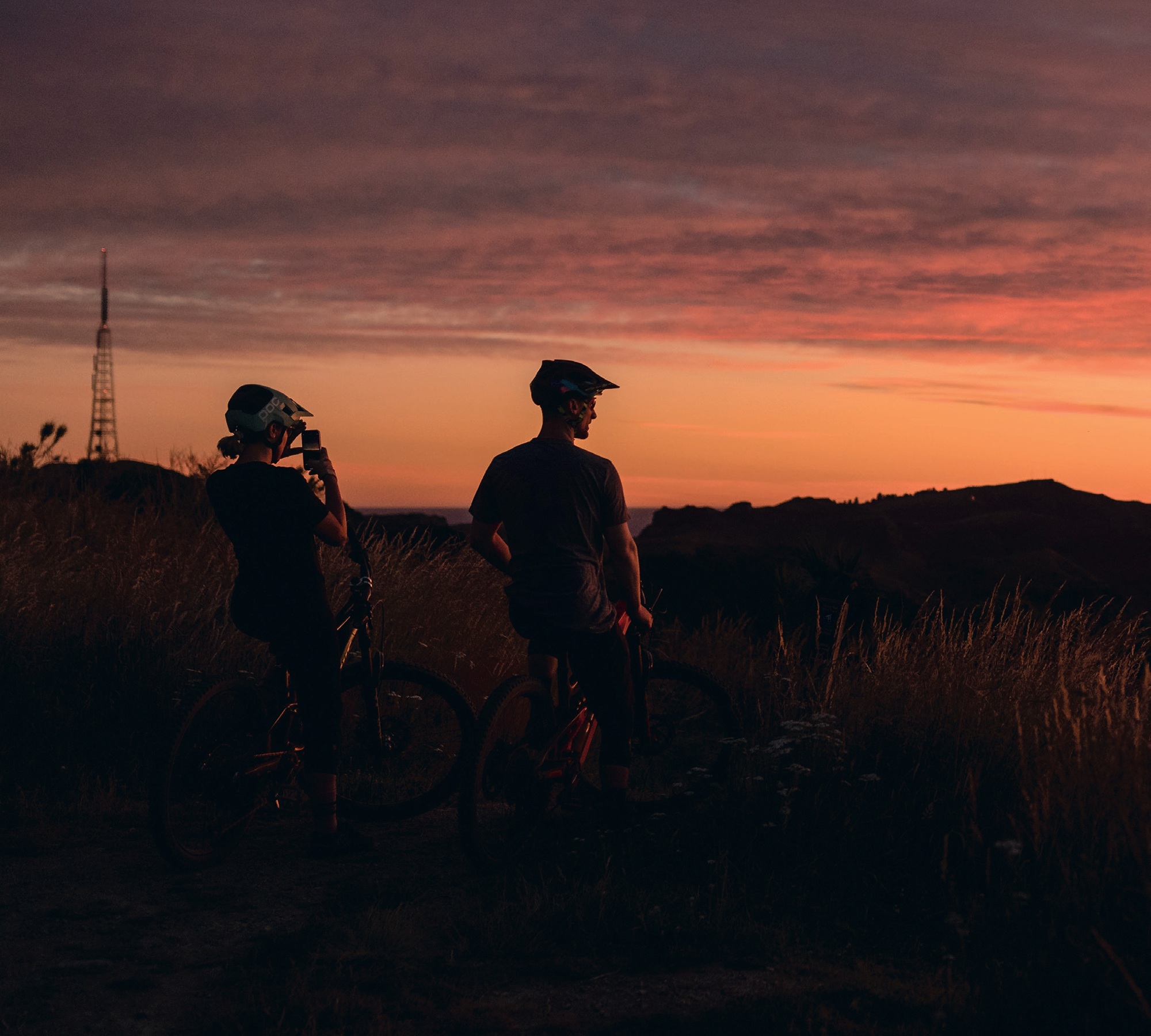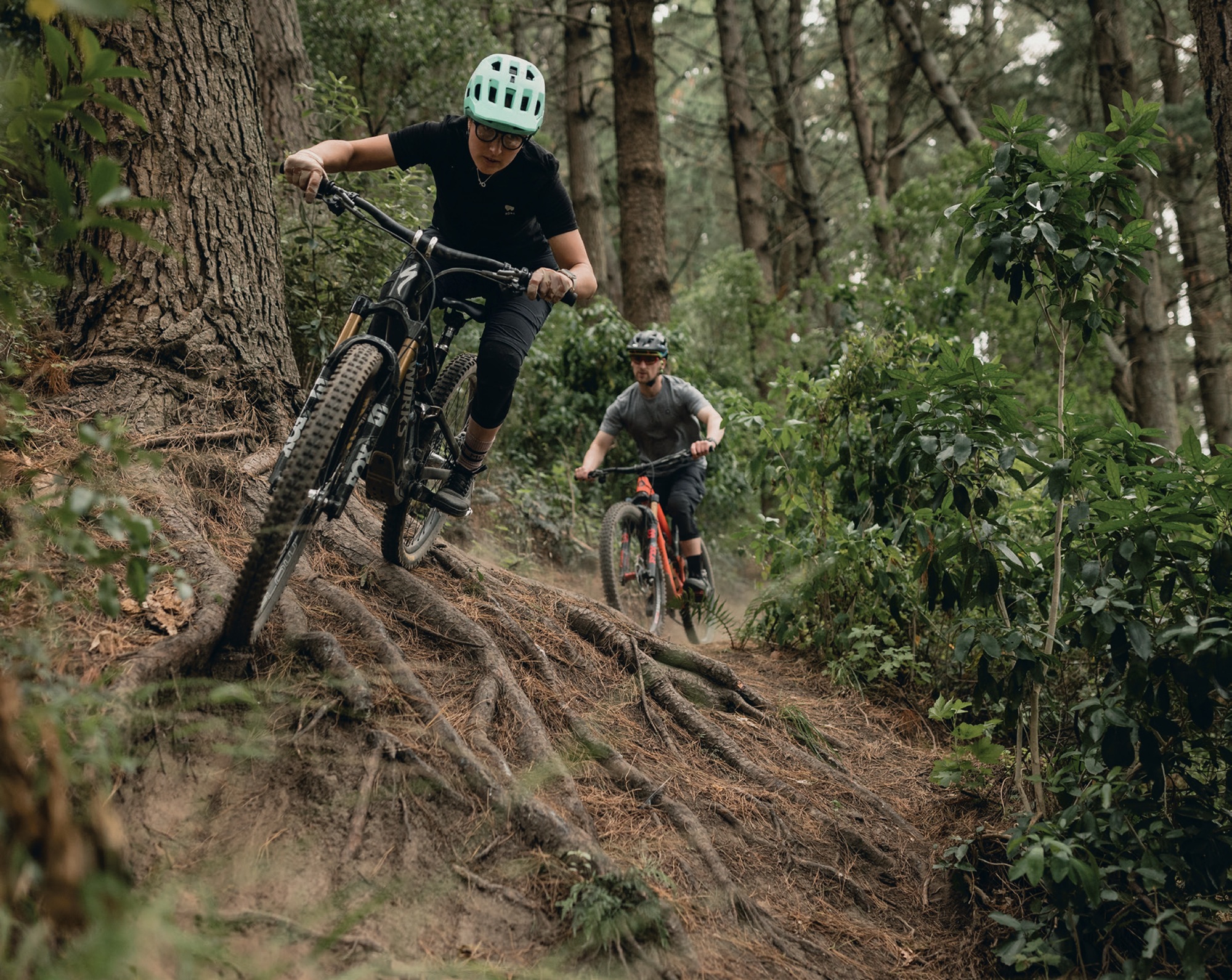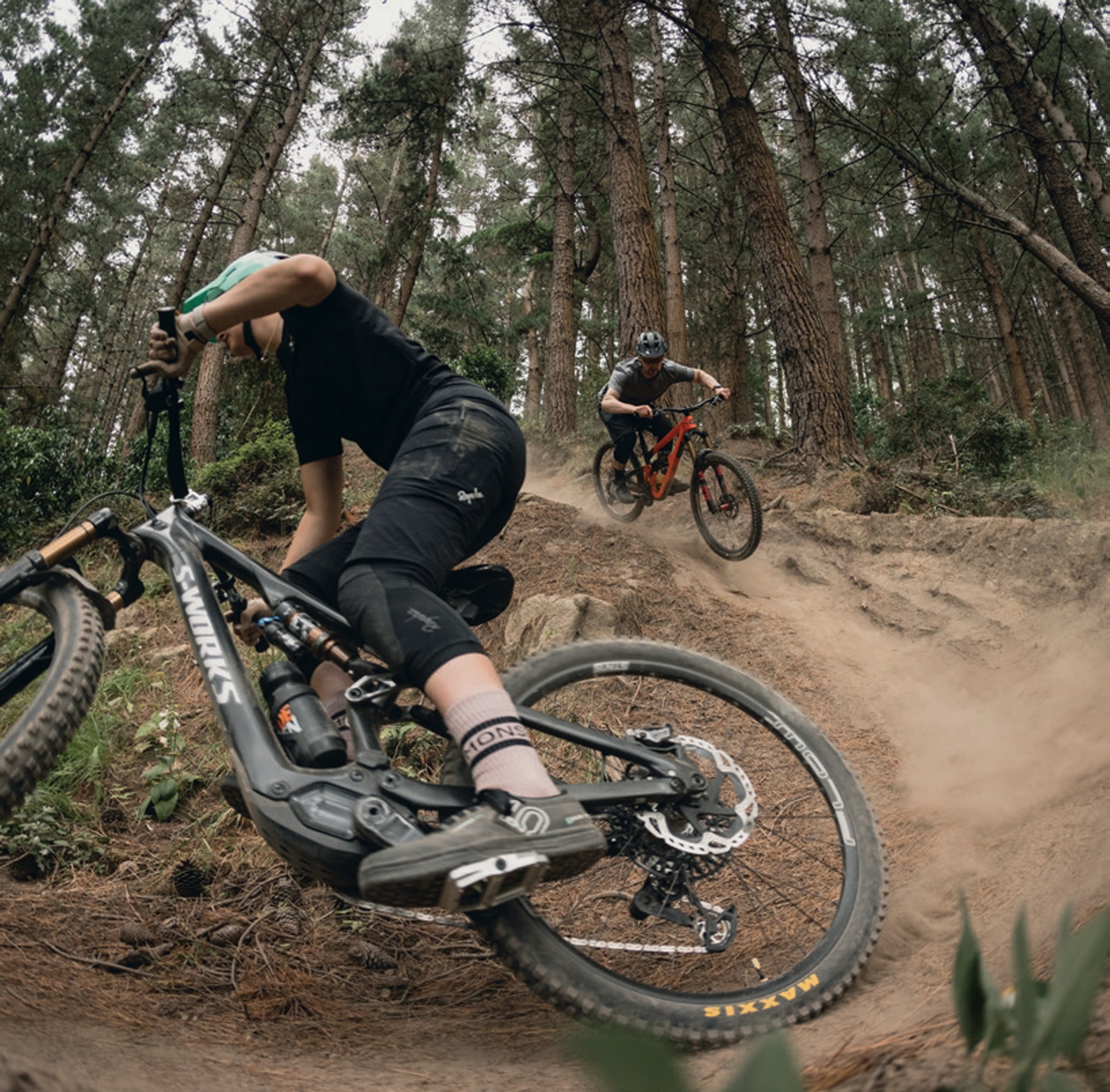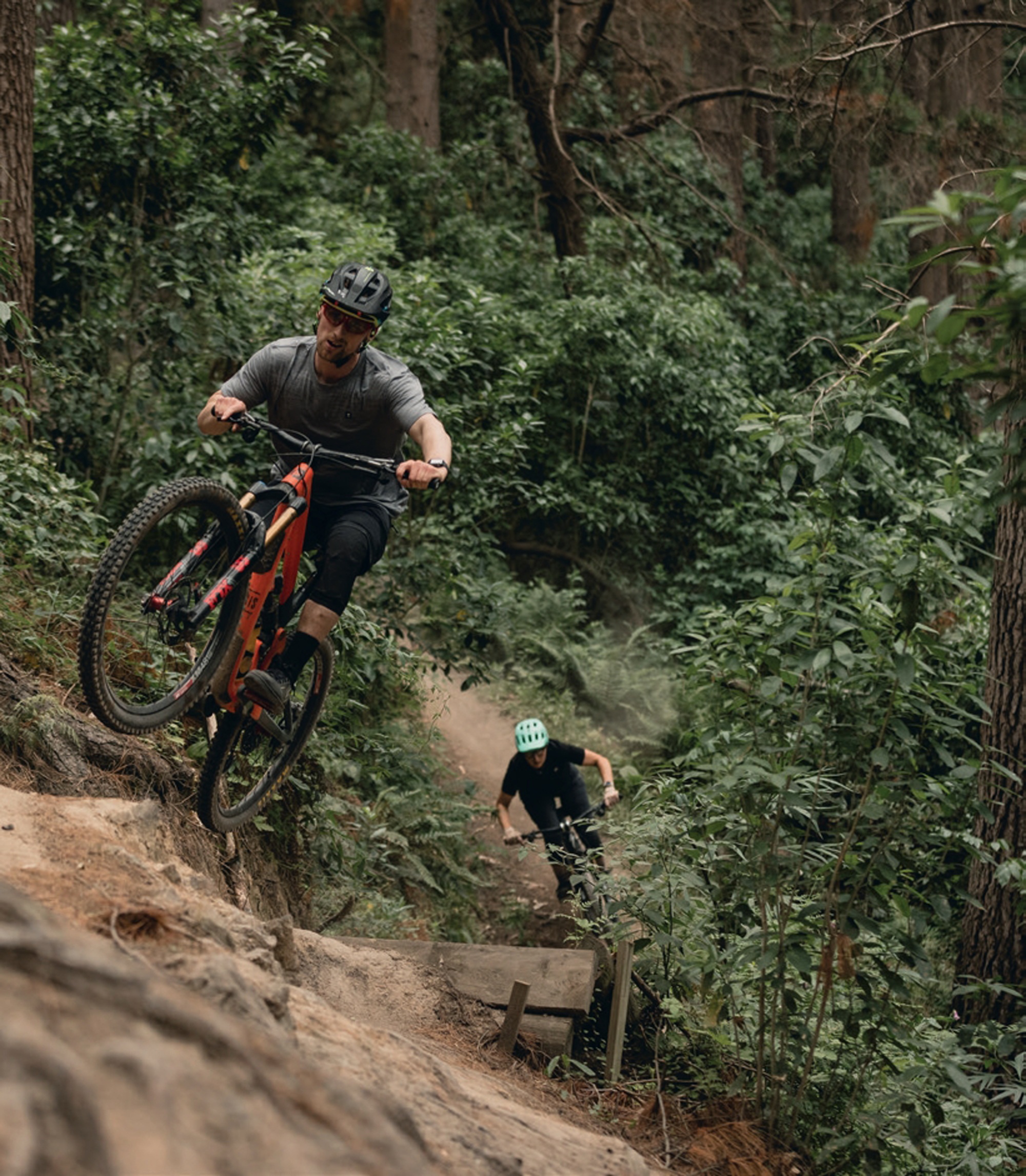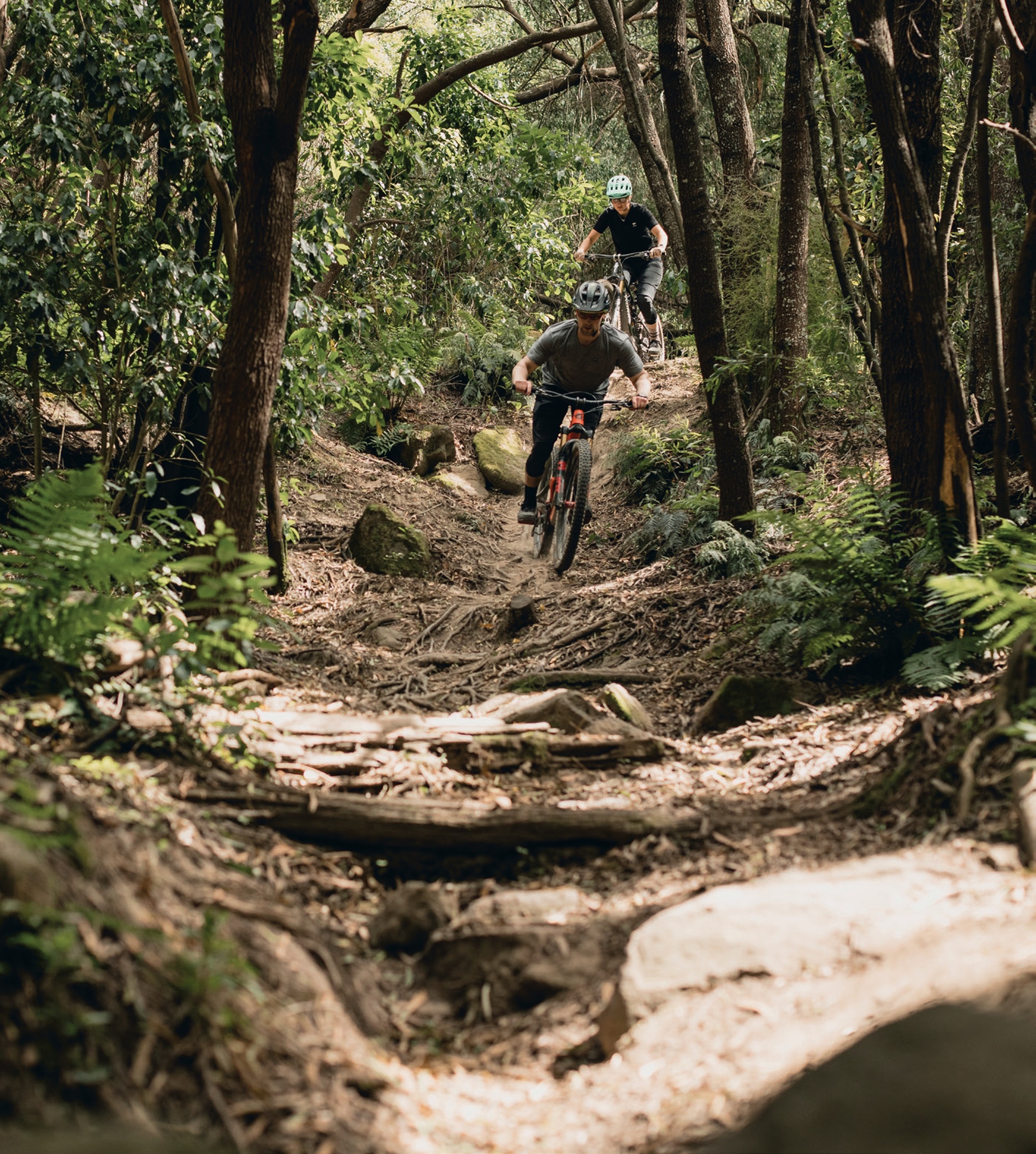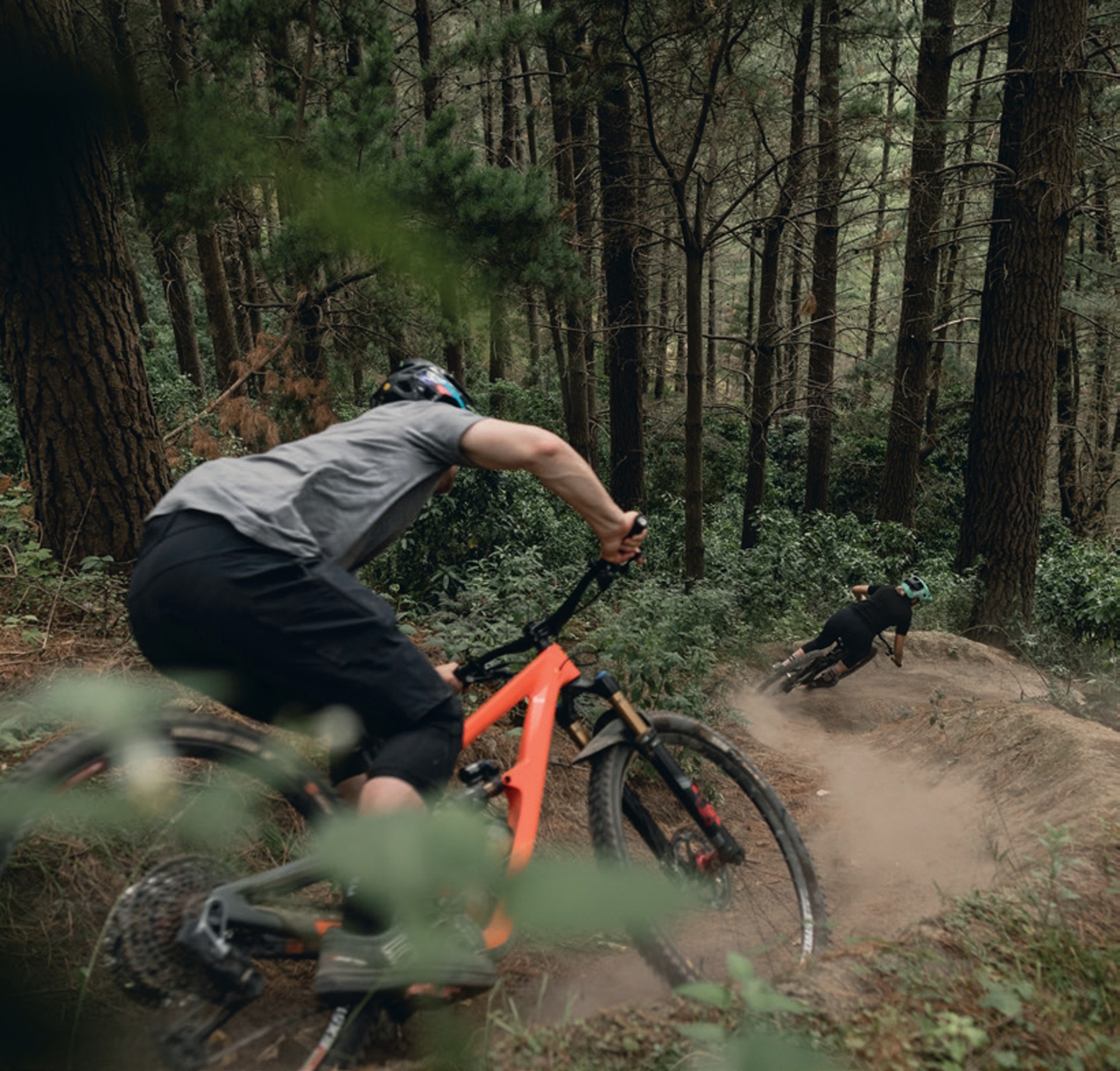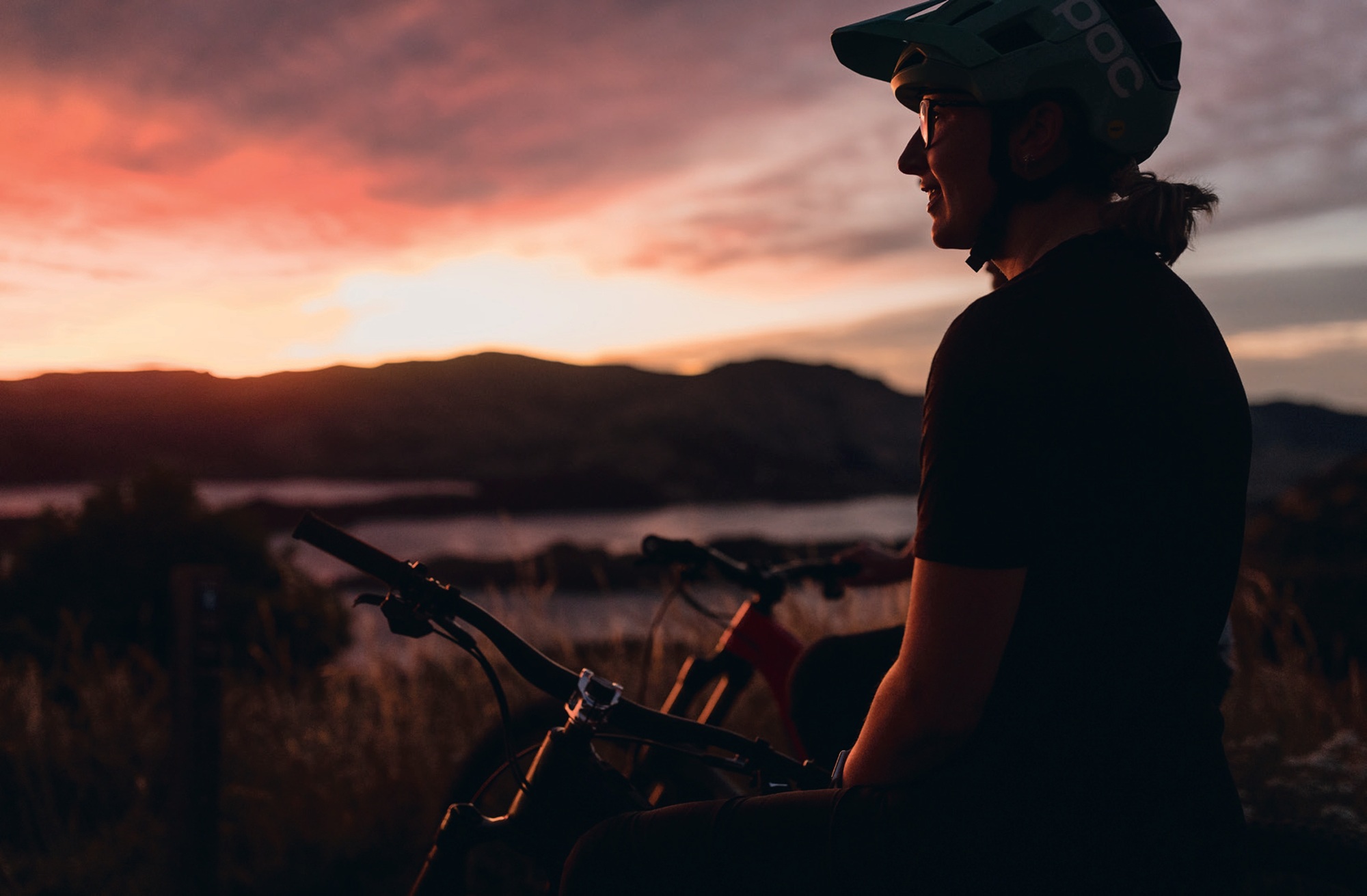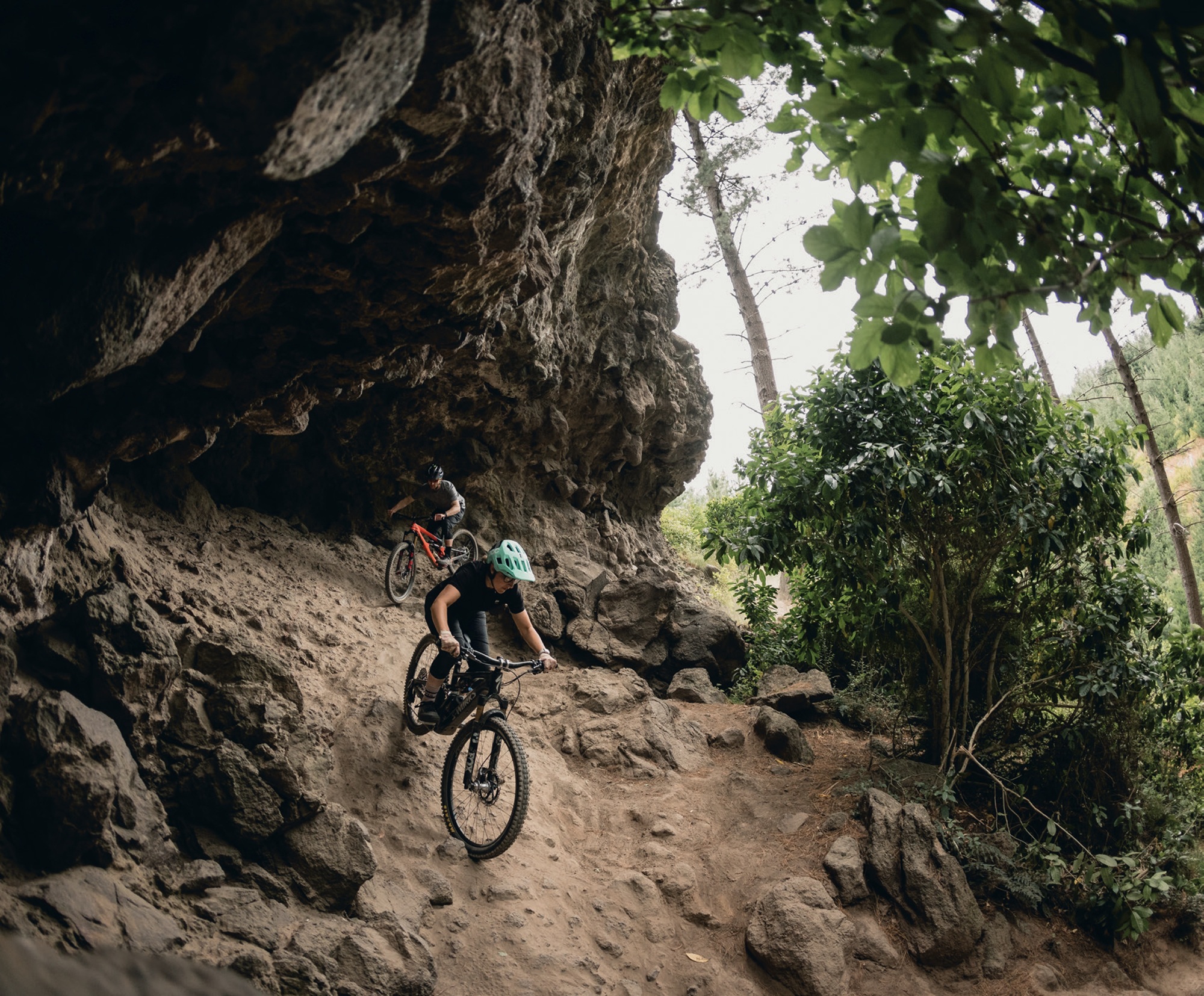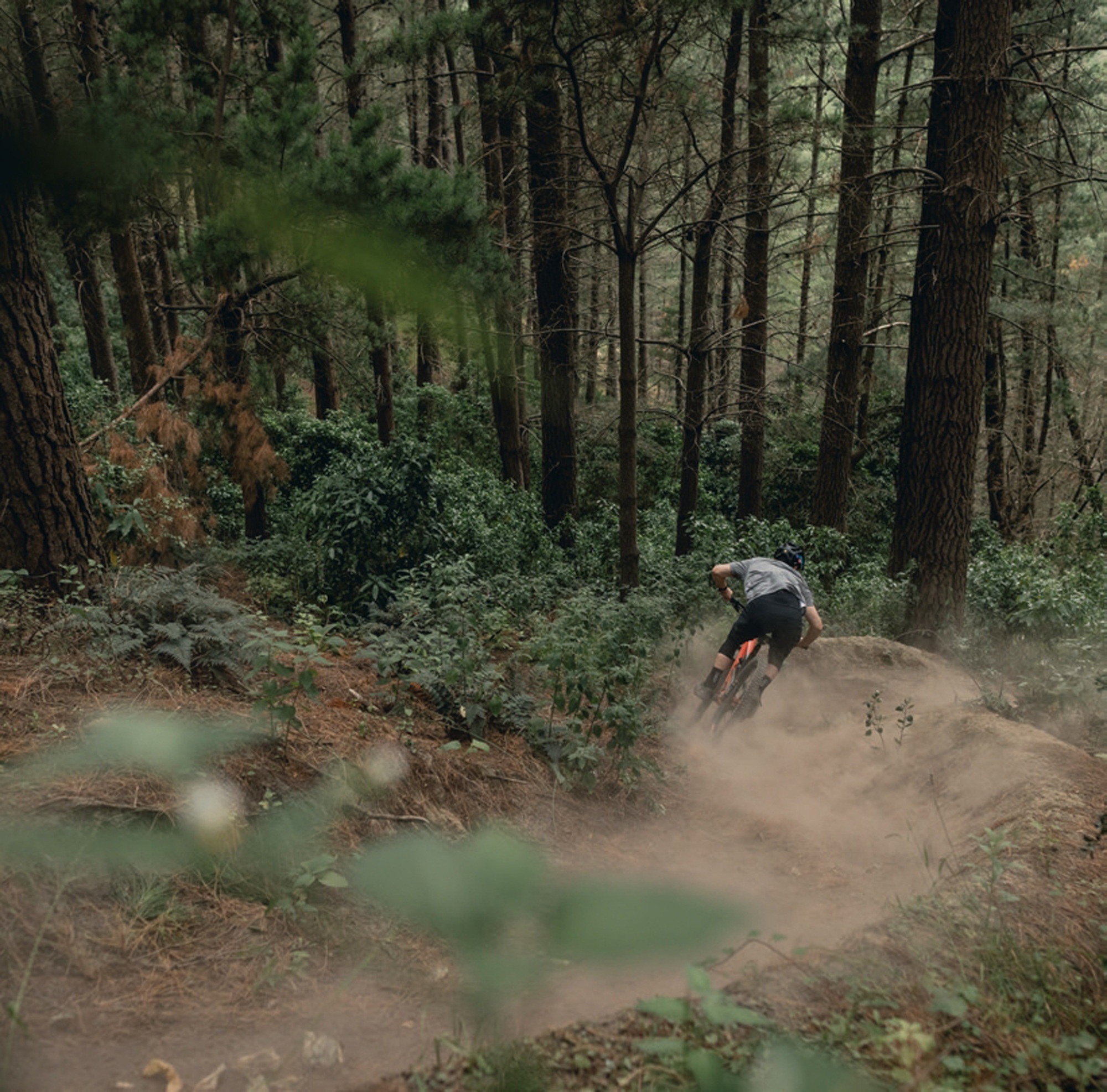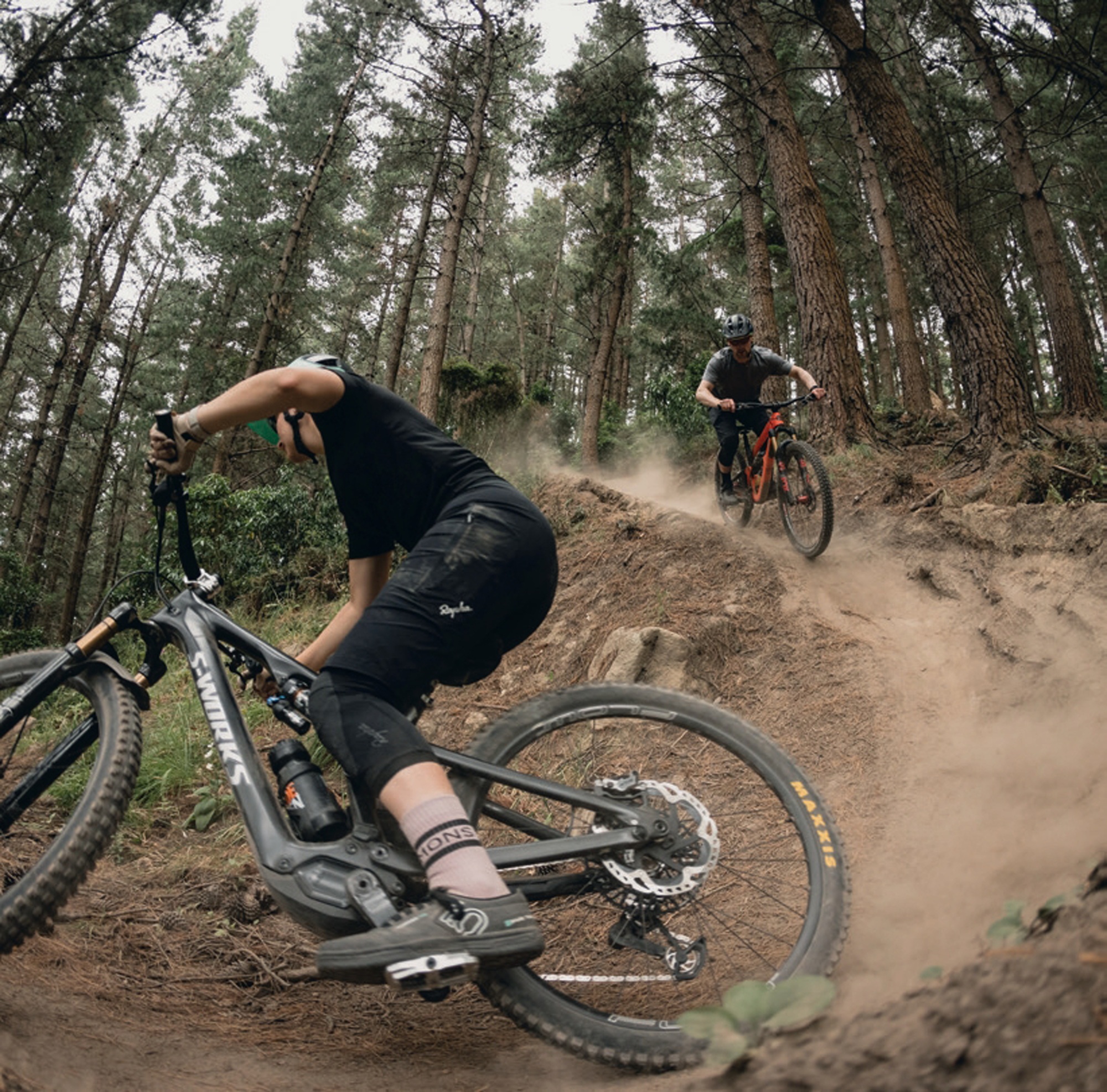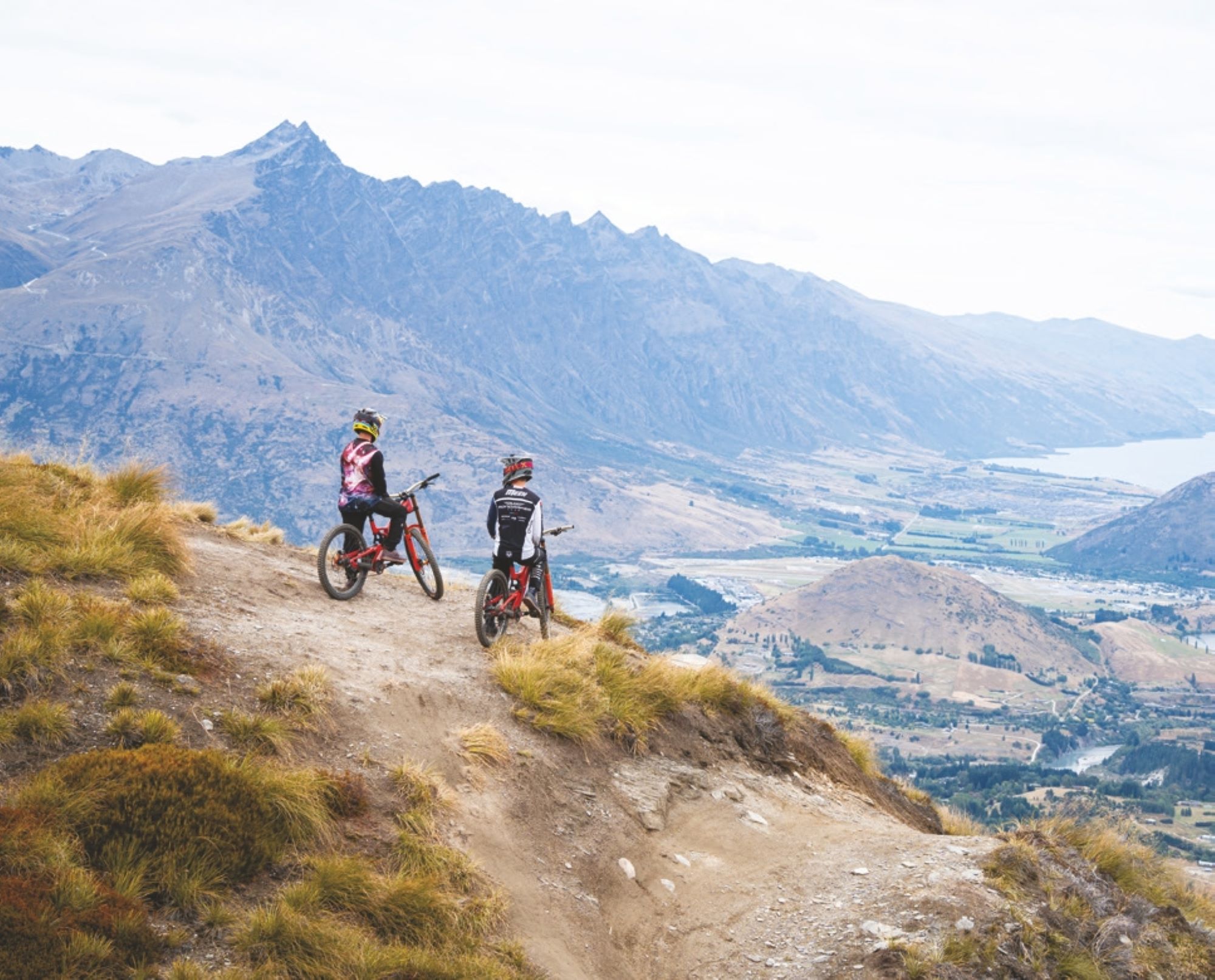Resilience in Ōtautahi: Christchurch’s Mountain Biking Legacy
Words Lester Perry
Images Cameron Mackenzie
In the shadow of the Southern Alps, where tectonic forces have shaped both landscape and spirit, Ōtautahi Christchurch’s mountain biking community has written its own story of resilience.
In the shadow of the Southern Alps, where tectonic forces have shaped both landscape and spirit, Ōtautahi Christchurch’s mountain biking community has written its own story of resilience.
Like the native tussock grass that bends but never breaks in Canterbury’s fierce nor ‘westers, the city’s riders have proven time and again that adversity only strengthens their resolve.
The devastation of yesteryear has hardened city dwellers who have incredible forward momentum. These individuals are armed with spades and determination and, over the past decade or more, they’ve built new lines to prove their mettle on. Not only new lines appeared but new riding communities too and, nowadays, rider’s flock to Christchurch and its stunning surrounds to get a piece of the action.
The Port Hills, those ancient volcanic remnants that stand sentinel over the city, have always been more than just terrain. They’re the beating heart of Christchurch’s mountain biking culture. From the technical challenges of Flying Nun to the flowing contours of Anaconda, each trail tells a story. Simply ask around and you’ll hear rider’s tales of dawn missions before work, lights twinkling on helmets as they chase the sun up Mt. Vernon; and weekend missions.
When the Christchurch Adventure Park (CAP) emerged from the drawing board in 2016, it wasn’t just another bike park—it was a statement of intent. Heck, there was a ton of excitement in the air at the time and rightfully so. This would be the Southern Hemisphere’s first year-round chairlift-assisted bike park. It represented everything the community stood for: ambition, innovation, and that characteristic Cantabrian courage to dream big. The 358.5 hectare park became a testament to what’s possible when passion meets perseverance.
The 2017 Port Hills fires, that swept through CAP, could have been the end of the story. Instead, it became just another chapter in Christchurch’s tale of renewal. As the smoke cleared, revealing a changed landscape of blackened pine skeletons and scorched earth, the mountain biking community rallied. Volunteer trail builders worked alongside professional teams, adapting their designs to the new terrain. Where once there were forest lines, they created raw, exposed tracks that showcased the hills’ natural beauty. The park didn’t just survive—it evolved.
Today, Christchurch’s riding scene reflects this history of adaptation and growth. The city’s unique geography offers something for every rider. Beginners find their wheels at McLeans Island, where purpose-built tracks wind through river terraces. Urban warriors connect the dots between the city’s green spaces via an extensive cycle network that makes every ride an adventure. Intermediate to advanced riders push their limits at CAP, where world-class trails like Shredzilla and B-Line challenge even the most skilled athletes.
The highly anticipated Crankworx Summer Series is set to return to New Zealand in 2025, after the cancellation of the 2024 event due to the devastating fires in the Port Hills. The series will take place from 13th to 16th February 2025, with a new line up of events that will elevate the mountain biking experience for both riders and spectators alike, and will form part of the build-up to the first mega-festival of the Crankworx World Tour, in Rotorua from 5th – 9th March 2025.
The Ōtautahi Christchurch festival will introduce a new Freeride Mountain Bike Association (FMBA) Gold Level Slopestyle event, the first of its kind in New Zealand. The new course and competition is set to attract some of the world’s top Slopestyle riders and provide a pathway for emerging New Zealand talent. Alongside Slopestyle, the series will also feature Pump Track and Downhill, ensuring a weekend packed with action for spectators and athletes alike.
Beyond the established trails, Christchurch’s riding culture continues to evolve. Secret lines appear in forgotten corners of the Port Hills, carved by passionate locals who see possibility in every contour. Over the weekend, vehicles with bikes hanging off them head out of town with riders making the short trek to Craigieburn and Mt. Hutt, extending the community’s reach into the high country. Each new trail, whether sanctioned or social, adds another thread to the rich tapestry of Christchurch’s mountain biking story.
The city’s mountain biking infrastructure has become a model for urban planning worldwide. The Major Cycleway network, born from post-earthquake reconstruction, has transformed how people move through the city. Riders can now pedal from the International Airport to the Adventure Park without leaving dedicated cycling infrastructure – a journey that captures the essence of Christchurch’s commitment to two-wheeled adventure. What’s even better, is that you can store your bike box at the airport—perfect for a weekend riding getaway with no need for a car!
As the sun sets behind the Port Hills, casting long shadows across tracks both old and new, Ōtautahi Christchurch’s mountain biking community continues to prove that it’s not the challenges that define us, but how we respond to them. In the end, it’s not just about the trails – it’s about the people who build them, ride them, and keep coming back, no matter what nature throws their way.
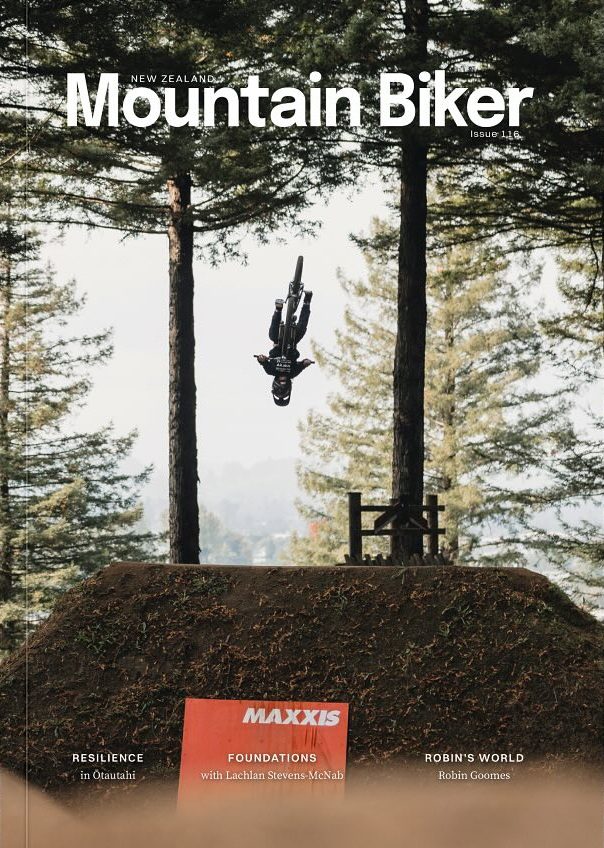
Destination: Coronet Peak
Words & Images Riley McLay
Famous Brazilian footballer, Pelé, once said; “Success is no accident. It is hard work, perseverance, learning, studying, sacrifice, and most of all, a love of what you are doing”. MeekBoyz Racing’s focus on success has led them to join forces with Coronet Peak, taking on the role of ambassadors for the bike park. Being able to perform at a high level requires having the best riding opportunities and access to quality facilities.
This relationship was an obvious choice for Coronet Peak and a great fit for the boys, as both parties share a lot of key values, along with their love of all things two-wheeled. Not only is it an opportunity to support Queenstown locals with chasing their dreams of racing, Coronet Peak also feels they are both in a position to grow together and help progress the boys racing while continuing to give Coronet Peak exposure on the international stage.
Coronet Peak was New Zealand’s first commercial ski field, opened in 1947. It originally hosted one single tow rope, which would get skiers up the snow-covered slopes of the mountain. A stark contrast to today’s multi chairlift operation that spans the majority of the hill. In recent years, Coronet has switched their focus to becoming an all-year outdoor recreation destination,with plans to greatly expand upon their current vast network of some of Queenstown’s best downhill, enduro and cross-country mountain bike trails. Giving riders a variety of options to accommodate from beginner to pro level abilities. Coronet Peak is only a short 20-minute drive from Queenstown central, making it easily accessible to locals and tourists visiting the mountain biking mecca. The ski area is instantly recognisable from all angles as you arrive into the Whakatipu Basin. As you snake your way up into the alpine, you are met with the bright glow of tussock grass covering the hillside. The faintly flowing shadow of trails give the only hint of activity amidst the ruggedness of the high country. As you get closer to the top, the flurry of other riders increases and the sound of laughter breaks the serenity. Coronet Peak’s summer operations allows it to take advantage of what it has built upon over the many winter months they’ve experienced, and continue to provide a premium product for the mountain bike community.
The main base building consists of a fully staffed indoor cafe. Sitting on the outdoor deck and watching fellow riders go past, is the perfect way to relax with a bite to eat or cold refreshment on a warm summer’s day. The base building also features a fully stocked bike workshop to tend to any issues you may have out on the trails. This also gives patrons access to Coronet Peak’s fleet of rental bikes and ensures your rental is fine-tuned for your preferences, and maintained throughout the day. The flexibility of pass options allows riders to easily plan their day of riding, with day and 4-hour passes available. Experiencing the magic of golden hour up Coronet is not to be missed, with a sunset pass from 4-8pm available on Thursdays and Mondays. A perfect way to unwind after a busy day and make the most of the late evenings. For those less experienced, Coronet Peak also undergoes regular patrols, ensuring peace of mind, knowing that assistance is never far away should you run into any issues.
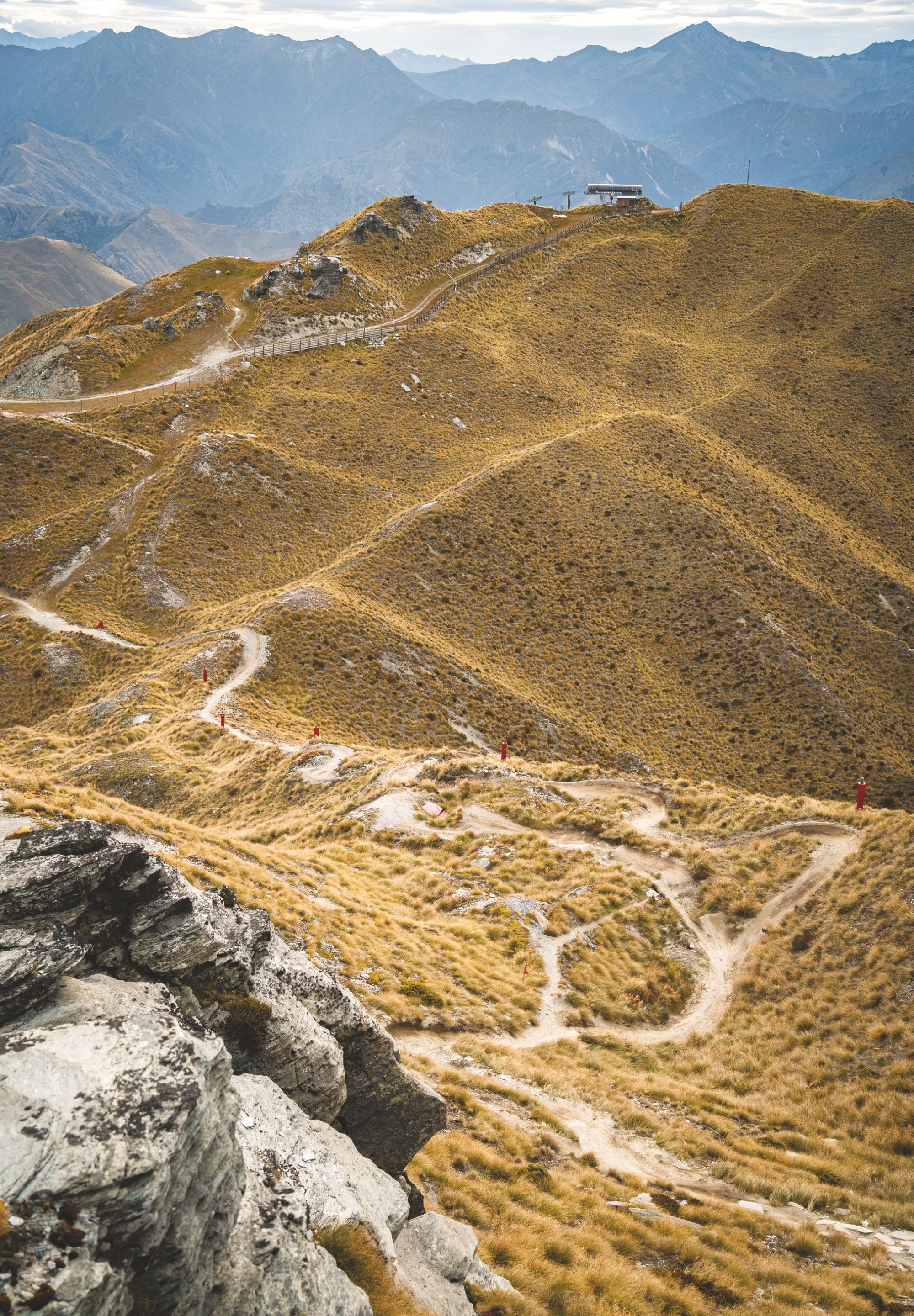
I can see why the mix of fast and well-built jumps and turns set to a stunning backdrop, attract these international riders who make the mountain pilgrimage every year.
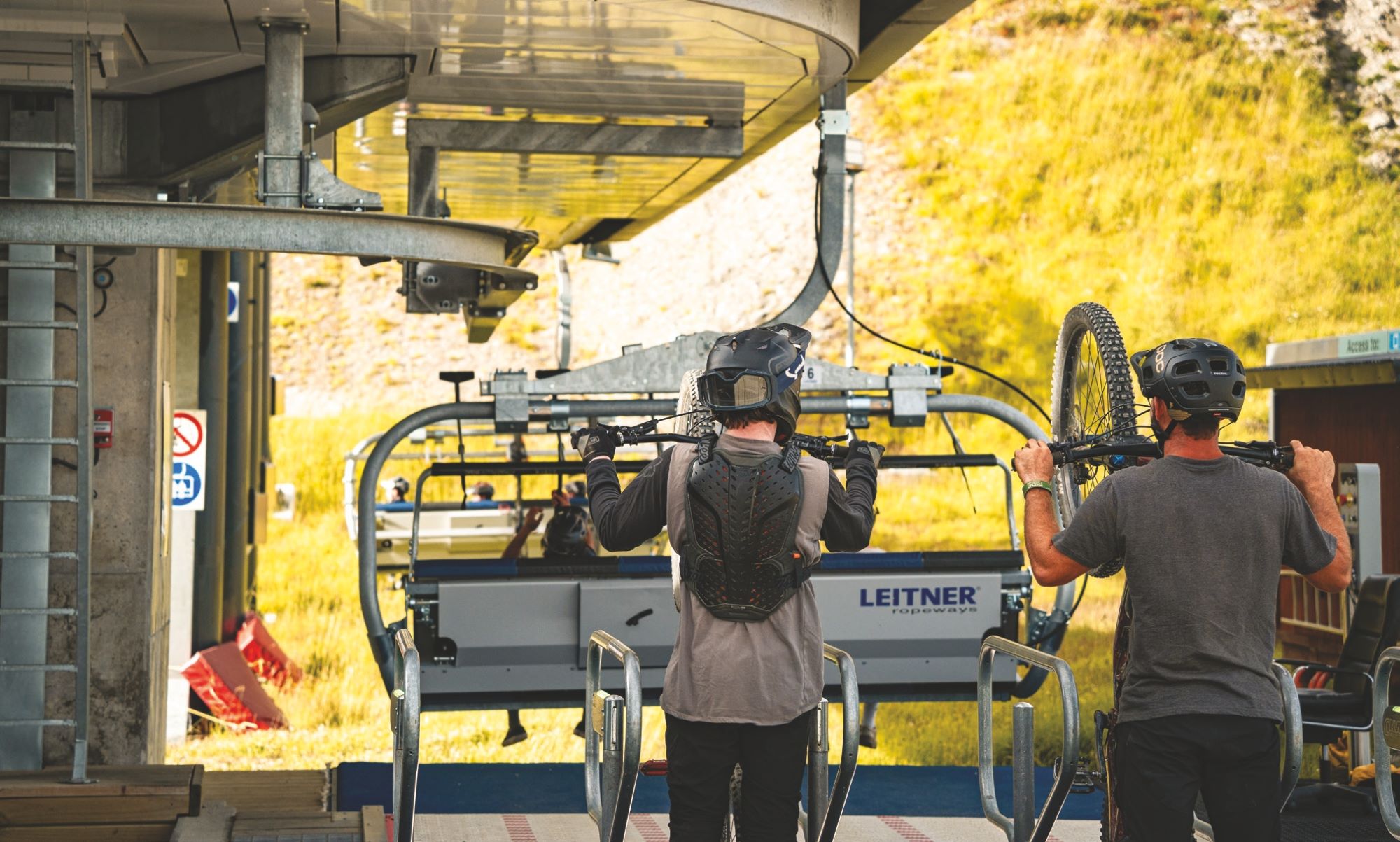
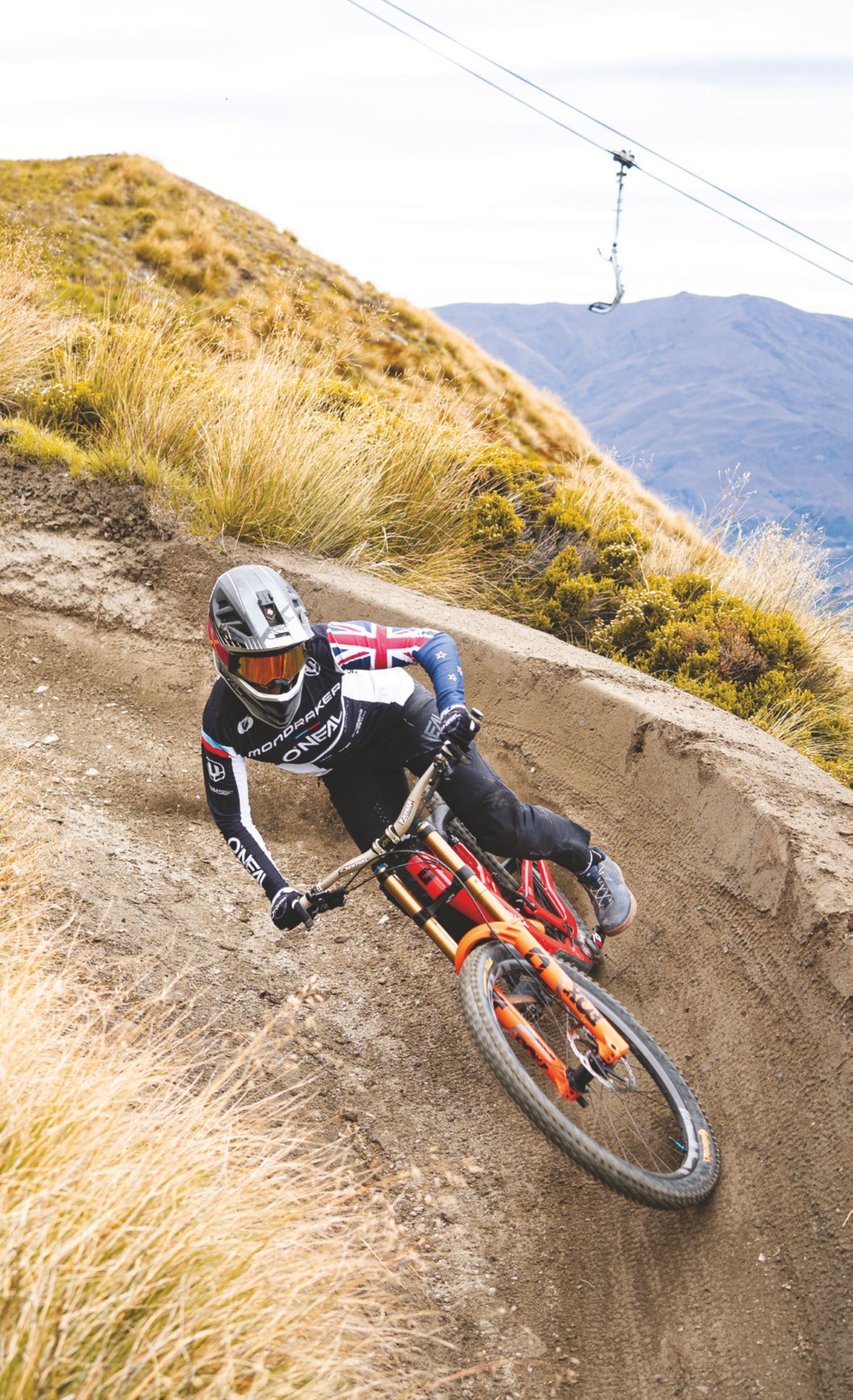

Coronet’s newly installed six-seater ‘Coronet Express’ chairlift, with a specifically designed bike rack system, quickly delivers riders to the peak. For those who aren’t into biking, there are enclosed gondolas for a more comfortable alternative. At the top, riders and outdoor enthusiasts alike are met with breathtaking views of the Whakatipu Basin. The sightseeing lookout is the ideal place to take in the expansive view of the valley below. These views extend to the very peak of Coronet, looking out to a full 360 panorama of the surrounding southern alps. From the peak of Coronet, riders can explore three trails: Coronet XC, Coronet DH, and the Dirt Serpent trail.
The Coronet XC is the longest trail on the upper part of the mountain. Starting under the chairlift, this grade 3 trail takes you right out towards the north side of the ski field boundary. With a series of switchbacks and varying singletrack, this trail is the perfect warmup for a day of riding. It is also a great starting point for less experienced riders, as this trail is a perfect introduction and opportunity to acclimatise yourself to the famous Coronet Peak dirt. It’s extremely grippy texture (even when wet) is another characteristic that sets Coronet Peak apart from other trails in the Queenstown area – and is an absolute delight. This trail also gives you access to the Slip Saddle, a grade 5 trail that carries you all the way into the nearby Arrowtown township, via the Bush Creek trails.
Coronet DH, arguably the most well-renowned trail of the three, begins directly as you hop off the lift. The grade 5 black trail is the most direct way down the hill. Originally sculpted in 2006, the track travels through the alpine tussock and makes use of the rugged terrain to give riders more of a challenge, with a combination of high speed and technical sections. It’s also host to iconic features such as the Canyon Gap and Rock Slab Drop that fully utilise the landscape. These features can make for some thrilling moments.
Adapting to the speed of the trail does take a lap or two, but once you memorise the order of things, you’ll see why the trail has gained the recognition it deserves. It was specifically constructed with downhill racing in mind and frequently hosts races on the local club and national level. Coronet DH is a magnet for overseas professional riders in the summer months, as it is the perfect training ground for the northern hemisphere off-season. It isn’t uncommon to see some of the world’s fastest racers lapping out the track on any given day. During one sunset session, I even spotted the likes of Laurie Greenland and Danny Hart, along with at least ten other world cup racers, ripping down the track. I can see why the mix of fast and well-built jumps and turns set to a stunning backdrop, attract these international riders who make the mountain pilgrimage every year.



